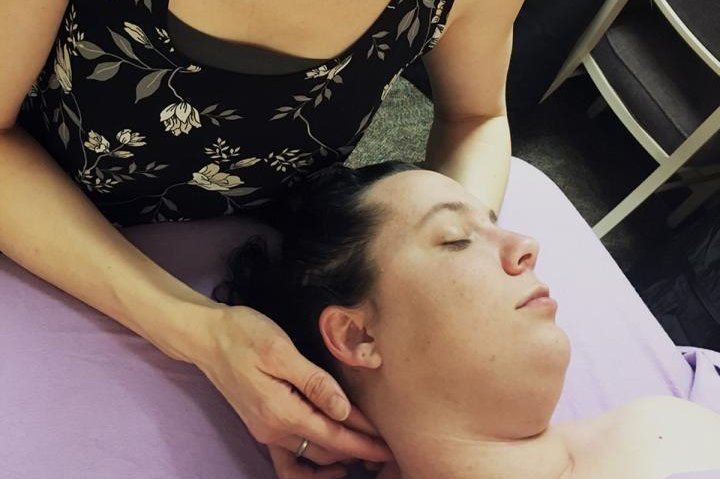A new study shows that real-world massage therapy is effective at treating low back pain. Photo courtesy of School of Health and Rehabilitation Sciences
April 3 (UPI) -- Researchers at the School of Health and Rehabilitation Sciences at Indiana University-Purdue University Indianapolis found real-world massage therapy is an effective treatment for chronic low back pain.
The small study included 104 patients with low back pain who were referred by their primary care providers to participate in 10 massage therapy sessions with community practicing licensed massage therapists.
The participants were measured at baseline and after massage therapy at 12 and 24 weeks.
The researchers tracked participants for 24 weeks, comparing pain levels at the start of the study, at 12 weeks and at the end of the 24 week trial. The results showed 55.4 percent of patients who reported clinical improvements in symptoms at 12 weeks, and 75 percent participants showing initial improvement were still improved at 24 weeks.
The study also found adults age 49 and older reported better pain improvement outcomes from massage therapy than younger adults.
"The study can give primary care providers the confidence to tell patients with chronic low back pain to try massage, if the patients can afford to do so," Niki Munk, assistant professor of health sciences in the School of Health and Rehabilitation Sciences, said in a press release.
The study analyzed different characteristics associated with the likelihood a patient would receive a clinical improvement in back pain from massage therapy and found that obese patients had significant improvements in back pain but the improvements were not maintained over time.
Researchers also found patients taking opioids were two times less likely to have clinical improvements compared to those not taking opioids.
Munk said more research needs to be done including a cost-benefit analysis.
"The fact of the matter is that chronic lower back pain is very complex and often requires a maintenance-type approach versus a short-term intervention option," Munk said. "Massage is an out-of-pocket cost. Generally, people wonder if it is worth it. Will it pay to provide massage to people for an extended period of time? Will it help avoid back surgeries, for example, that may or may not have great outcomes? These are the types of analyses that we hope will result from this study."
The study was published in Pain Medicine















